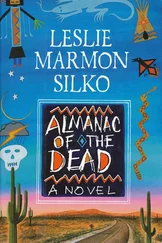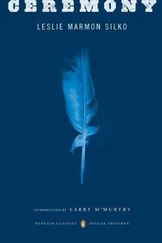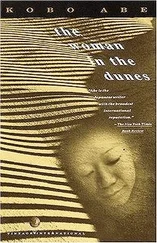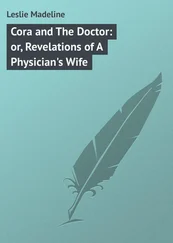Sister Salt was laughing when suddenly her eyes filled with tears. Yes, her Sand Lizard people were strange, and she felt strange and lost without Mama and Indigo.
For a long time after she and Indigo were parted, Sister Salt dwelled in the numb half world only a step outside the everyday world. She did not remember taking the step outside, only finding herself there after that terrible day she watched the train move away, slowly at first, then faster, until off in the distance it appeared to be the size of a snake, and then it was gone. Her body went numb; her hands and feet felt strange and distant from her; she opened her mouth to yell “Indigo!” but gasped instead. She could not get her breath and sank to the ground, and cried into the hot hard-packed dirt. Though no one could see, a part of herself was torn loose, and the bleeding filled her chest and stomach with a strange weight, so that for days Sister Salt lay motionless on her bunk and managed to swallow only water and a little corn meal soup Maytha and Vedna brought her. All the other girls avoided her; the Mojaves whispered she was suffering from ghost sickness, and the school staff feared typhoid, though she had no fever. The twins brought her the fresh datura root she requested, and she rubbed it against her cheeks and forehead to ask its help.
After the numbness in her body subsided, Sister Salt began to ask about Mama whenever she met Paiute or Mojave people who might know the whereabouts of the people arrested at Needles last winter. Yes, they’d heard about that, but no one seemed to know where the arrested people were taken — maybe to Fort Yuma or even Fort Huachuca. She missed Indigo so much, especially in the night, when she dreamed Indigo was lying beside her talking to her, only to awaken alone in the sweltering dormitory. She cried until her tears dried up and the other girls warned she’d go blind.
Next she sought out the Sand Lizard people Grandma Fleet had talked about, the ones who moved years ago to the Parker reservation on the river. But only a few people she spoke with had even heard of her people. Most thought the Sand Lizards were all gone. An elderly Mojave woman who cleaned houses for the white people took her aside and whispered she should be cautious because the Sand Lizard people were still remembered for their odd ways. The woman smiled and patted Sister on the arm as she said this; the old-time Mojaves had a great deal of respect and affection for the Sand Lizard people, who used to hide the Mojaves whenever the Mexican slave catchers pursued them. The help they gave others was one reason the Sand Lizard people got killed off; Grandma Fleet used to say there never were many Sand Lizards in the first place.
The superintendent of the Colorado River Indian agency referred to the old army barracks as “the school,” but there were no teachers or books; the school taught them how to boil the dirty laundry of the superintendent and his wife and the other government employees in big steel tubs of soapy water over hot coals. Sister Salt knew all about laundry because Mama did the hotel’s laundry in Needles. But the other young women — Cocopa, Yuma, and Mojave — were used to washing their clothes in the muddy water of the river, or not at all.
Each week Sister Salt made an escape plan, then changed her mind; which direction should she go to find Mama? She did not want to return to the old gardens without Indigo. The boarding students were allowed to come home once a year in the summer; so she decided to wait. The soldiers and Indian police brought ragged hungry people out of the canyons to the reservation at Parker every week, and she hoped to find someone with news of Mama.
Years before, the Mojaves and Chemehuevis were given tiny reservations along the river near Needles. The reservation at Parker held all the other Indians who used to live along the Colorado River before the white people came; so it was the most populous reservation on the river, and the largest too. Unfortunately, most of the land was above the fertile river bottom, on old floodplains impossible to irrigate.
Sister Salt had never seen such an ugly place — no wonder Grandma Fleet and the others refused to come in from the hills. White farmers claimed the best river bottom land. Along this stretch of the river not even the cottonwood trees or willows wanted to grow; the ground was hard-packed clay and old floodplain gravel. Only a small portion of the reservation land was fertile river bottom land, already allotted to regular churchgoers; all the others were left to grow what they could, on land that was too far from the river to irrigate and too parched by the sun to grow much.
The Parker Indian school superintendent called it a school, but he ran the place as a moneymaker for himself; he charged the soldiers and survey crews twenty-five cents per bundle for the dirty laundry that Sister Salt and the other young women washed in the school laundry. After the first week, Sister Salt began to mutter under her breath; this was no school, this was a prison. Maytha and Vedna said that all they had to do was get pregnant and the school superintendent would tell them to go as soon as their bellies got big. Sister Salt told them she did not plan to wait that long.
Sister Salt took every opportunity to get away from the school dormitory and laundry tubs to explore. The people were not permitted to farm their traditional fields any longer, and without water nothing grew in the old floodplain gravel. A few old people tried in the beginning by carrying water on their backs uphill to their fields of corn and beans, until they were defeated by the evaporation and the heat. The alluvial plains above the river were good only for sagebrush and rabbits.
The tin shacks built by government contractors were no better than the lean-to they had in Needles. Sister Salt was saddened by the quarreling that went on between the different tribes all crowded together there. The Chemehuevis and Mojaves were lucky to have their own reservations even if they were small, and many of the people at Parker envied the Mojaves and Chemehuevis, although they didn’t have enough farmland to go around either.
At Parker, if some poor person had even one parent who was Chemehuevi or Mojave, the others might jeer and tell them to go back to their own reservation. Sister Salt waited for someone to tell her to go home, but no one ever did. The few Sand Lizard people who remained were married to people of other tribes; they went to church every Sunday and spoke English. They did not turn Sister Salt away, but they shook their heads and whispered behind their hands about the fierce young Sand Lizard woman. Poor thing! She lived out in the hills too long!
Sister Salt watched the women who sat outdoors under ramadas made of tamarisk and willow branches to escape the oven heat of the tin shacks. Here they threw the old gambling sticks and drank cactus wine to pass the day. Lard, cornmeal, salt, and a little sugar were issued once a week. She saw women quarrel over cards, scream, and pull one another’s hair until Mr. Syrup, the Parker reservation policeman, was called to take them to jail.
The men were required to show up every morning to be assigned their work for the day by the superintendent; those who hunted rabbits in the sandhills outside reservation boundaries did so at the risk of jail. The people shuffled along with eyes dulled by the heat, and the tin shacks were to blame; if the people had been allowed to dig old-style houses partially underground they could keep cool until sundown, when traditionally work began in the hot months. But the authorities feared the Indians would take the opportunity to run away, and forbade work at night, when it was coolest.
The superintendent said the Indians must learn to stay put on the new reservation because a great many changes were on the way. Utah won statehood a few years before, so Arizona couldn’t be far behind. The surveys were completed for construction of the dam, and the digging for the canal to Los Angeles was under way. No one seemed happier about the construction activity at nearby Parker Canyon than the reservation superintendent. All winter he had important visitors in suits who patted him on the back and shook his hand.
Читать дальше












